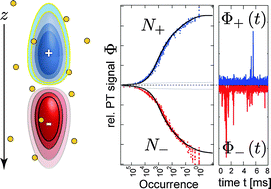Photothermal signal distribution analysis (PhoSDA)†
Abstract
Photothermal

- This article is part of the themed collection: Optical studies of single metal nanoparticles
* Corresponding authors
a
Universität Leipzig, Linnéstr. 5, 04103 Leipzig, Germany
E-mail:
cichos@physik.uni-leipzig.de
Fax: +49(0) 341 97 32598
Tel: +49(0) 341 97 32571
Photothermal

 Please wait while we load your content...
Something went wrong. Try again?
Please wait while we load your content...
Something went wrong. Try again?
M. Selmke, M. Braun, R. Schachoff and F. Cichos, Phys. Chem. Chem. Phys., 2013, 15, 4250 DOI: 10.1039/C3CP44092C
To request permission to reproduce material from this article, please go to the Copyright Clearance Center request page.
If you are an author contributing to an RSC publication, you do not need to request permission provided correct acknowledgement is given.
If you are the author of this article, you do not need to request permission to reproduce figures and diagrams provided correct acknowledgement is given. If you want to reproduce the whole article in a third-party publication (excluding your thesis/dissertation for which permission is not required) please go to the Copyright Clearance Center request page.
Read more about how to correctly acknowledge RSC content.
 Fetching data from CrossRef.
Fetching data from CrossRef.
This may take some time to load.
Loading related content
